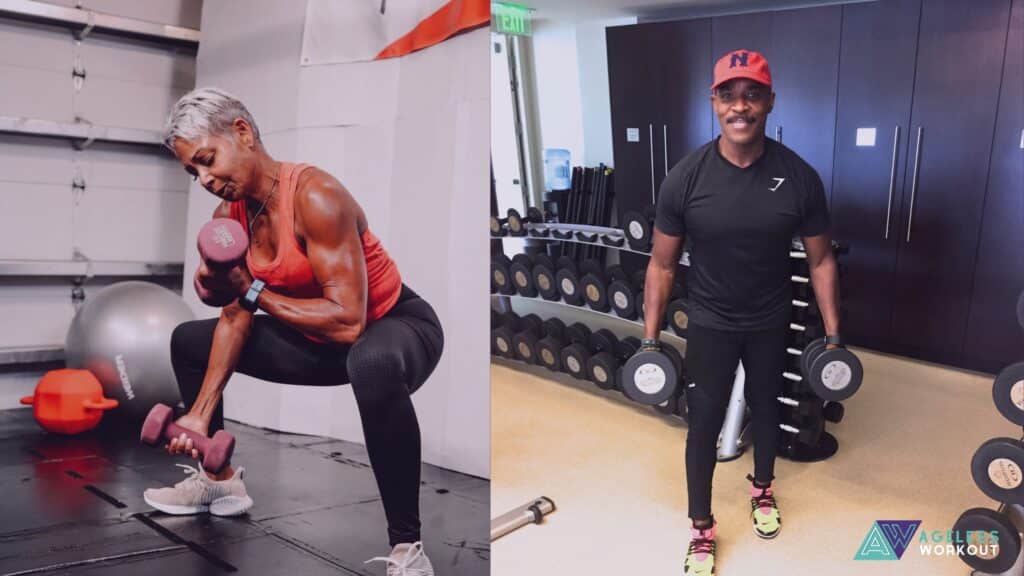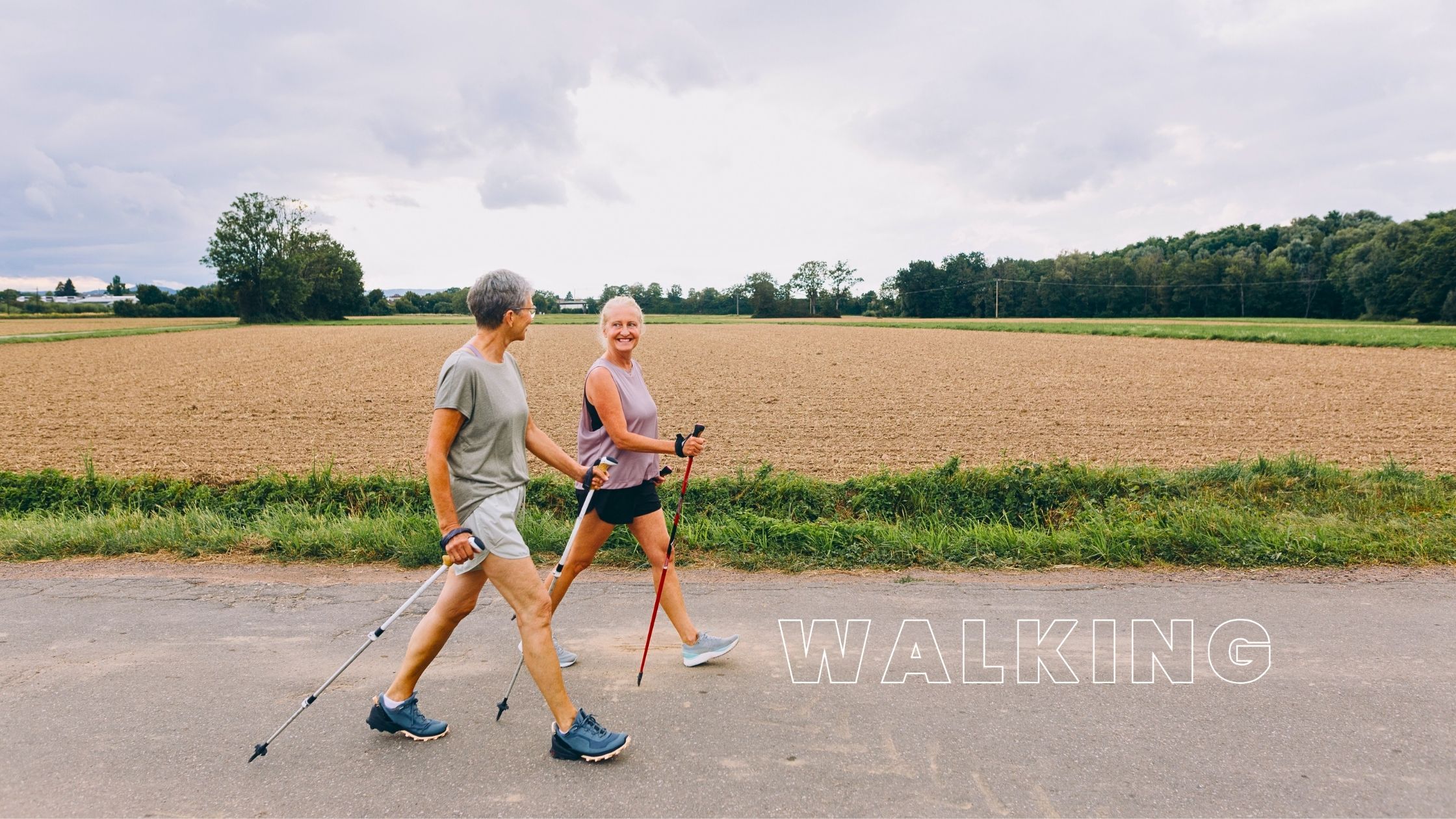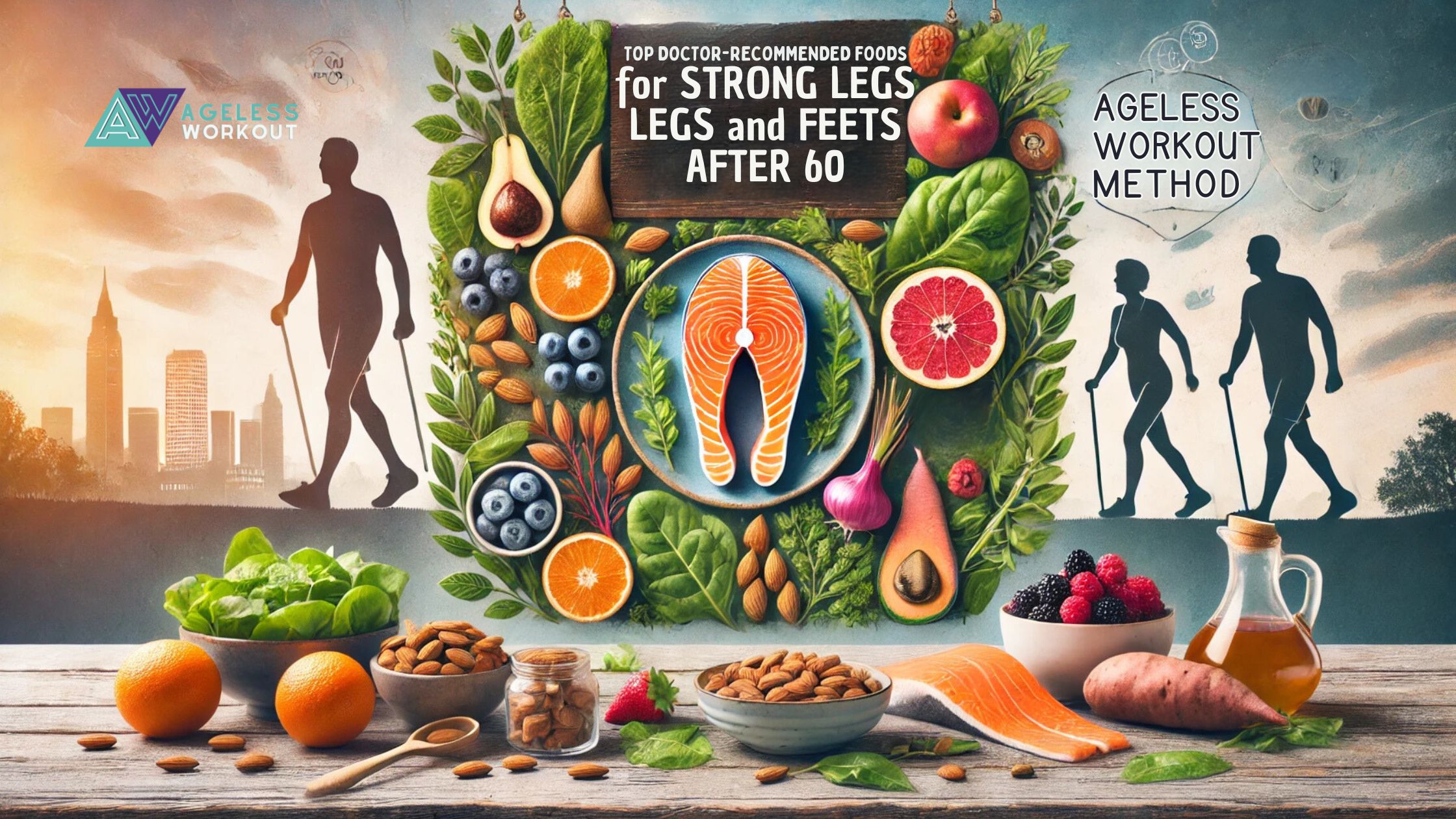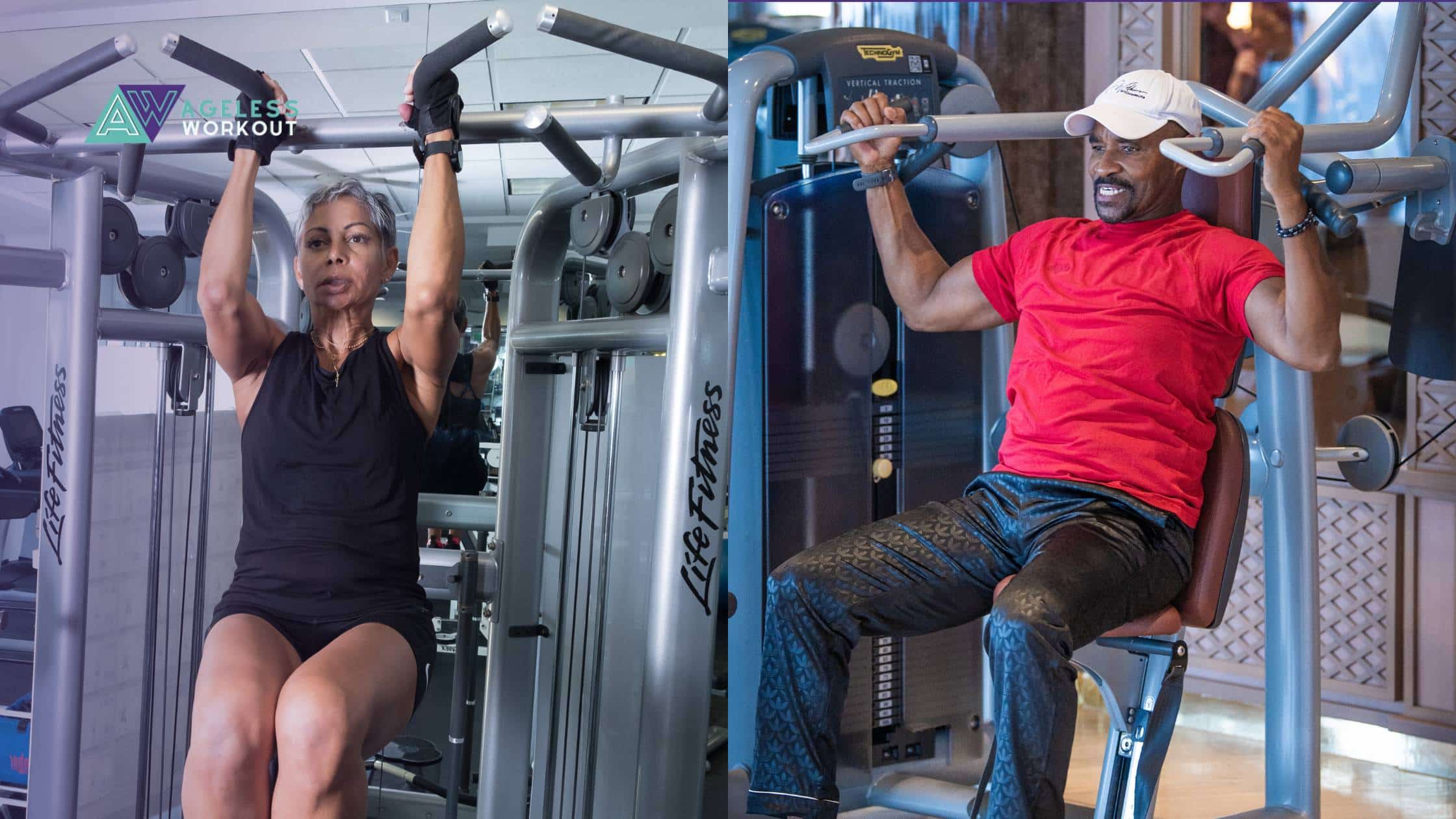Pulling exercises are a fundamental component of a well-rounded fitness routine, offering numerous benefits that extend beyond strength building. These exercises are crucial for counteracting the effects of aging, such as poor posture, neck and back pain, and an increased risk of falls. They are instrumental in developing a strong posterior chain which is key to maintaining youthful energy and reducing injury risks.
Incorporating resistance training, specifically pulling movements, into our exercise regimen is not just beneficial; it’s imperative for promoting muscle and joint health, preventing osteoporosis, and enhancing overall longevity. This guide will reveal the secrets of pulling exercises and demonstrate how they can be effortlessly integrated into your daily routine for optimal pro-aging results.
Benefits of Pulling Exercises for Muscle Health
Pulling exercises are a cornerstone of a balanced fitness regimen, particularly beneficial for the muscle health crucial in aging gracefully. Here’s a deeper look into how these exercises support muscle health:
Key Muscle Groups Targeted by Pulling Exercises
- Back Muscles: Exercises like pull-ups intensely work the latissimus dorsi, trapezius, thoracic erector spinae, and infraspinatus, which are vital for maintaining an upright posture and reducing back pain.
- Biceps and Forearms: These exercises enhance grip strength, which is essential not only for daily activities but also for improving performance in sports and other forms of physical exertion.
- Rear Deltoids and Trapezius: Strengthening these muscles contributes to better shoulder health and overall upper body strength.
Health Benefits of Regular Pulling Exercises
- Posture Improvement: Strengthening the muscles in the backside of your body helps in maintaining proper posture, crucial for reducing the risk of back and neck pain.
- Enhanced Mobility and Balance: By improving the strength and flexibility of muscles, pulling exercises can help prevent falls, a common issue as we age.
- Increased Access to Life’s Activities: Stronger muscles mean increased ability to perform everyday activities, which leads to improved quality of life and independence.
Strategic Incorporation in Workout Routines
- Muscular Balance: Integrating both push and pull exercises ensures an overall balanced muscle development, preventing muscular imbalances that can lead to injuries.
- Variety and Challenge: Including different forms of pulling exercises like horizontal pulls or varying the grip during pull-ups helps in continuous muscle development and avoiding plateaus.
Regular engagement in pulling exercises not only builds the muscles but also fortifies the body against age-related decline, making them a key component of a pro-aging fitness strategy.
Impact on Joint Health and Mobility
Joint mobility is crucial for maintaining a range of motion that supports overall health and activity levels, especially as we age. The anatomy of joints and tissues, along with the nervous system, plays a significant role in our mobility. Regular pulling exercises, tailored to individual needs, can profoundly impact these factors, enhancing flexibility and motor control.
Understanding Joint Mobility
- Muscle Flexibility: Pulling exercises increase muscle flexibility, which in turn enhances joint mobility.
- Nervous System Adaptation: These exercises help the nervous system adapt to stretches, improving overall movement.
- Motor Control: Improved control over muscle movements helps in performing daily activities with ease.
Daily Mobility Routines
- Routine Checks: Incorporating a daily routine to check joint mobility can help identify areas needing attention.
- Warm-up Exercises: Gentle movements such as arm circles and shoulder shrugs prepare the joints for more intense activity.
Exercises for Joint Health

- Aerobic Activities: Engaging in swimming or tennis keeps the heart healthy and joints mobile.
- Strength Training: Using resistance bands or hand weights builds muscle strength around the joints.
These activities not only maintain joint health but also contribute to weight management, crucial for reducing stress on joints like knees and hips. Every pound lost significantly decreases the pressure on these joints, enhancing mobility and reducing pain.
By integrating these practices into our daily lives, we can significantly improve our joint health and mobility, supporting a more active and fulfilling lifestyle as we age.
Role in Bone Density and Osteoporosis Prevention
Pulling exercises, particularly those involving strength training, play a significant role in enhancing bone density and preventing osteoporosis. Here’s how incorporating these exercises can make a substantial difference:
Key Benefits of Pulling Exercises for Bone Health
- Increased Bone Mineral Density (BMD): Regular engagement in strength and resistance exercises can boost BMD in critical areas like the spine and hips. This increase is crucial for countering age-related bone density loss.
- Strengthening of Cortical Bone: Exercises that involve pulling and lifting can enhance the thickness and resistance of cortical bone at loaded skeletal sites, crucial for overall bone health.
- Improvement in Muscle Mass and Joint Stability: By increasing muscle mass, pulling exercises enhance the stability around joints, which helps in maintaining bone alignment and reducing the risk of fractures.
- Enhanced Posture and Balance: Stronger muscles developed through these exercises contribute to better posture and balance, significantly lowering the risk of falls and related bone injuries.

Exercises and Activities to Consider
- Strength Training with Resistance Bands or Weights: Focus on exercises that target the back muscles, which are vital for supporting the spine and maintaining posture.
- Weight-Bearing Aerobic Activities: Activities such as walking and stair climbing apply direct force to bones, stimulating bone growth and slowing down bone density loss.
- Flexibility and Stability Workouts: Incorporating exercises that enhance joint flexibility and stability can prevent falls, thus protecting bone health.
Precautions and Recommendations
- Avoid High-Impact Movements: For those with existing bone weaknesses, it’s advisable to avoid high-impact exercises that could lead to fractures.
- Consistent Routine: Building a routine that gradually increases intensity can help safely improve bone density and muscle strength.
- Consultation with Health Professionals: Always consult with a healthcare provider or a fitness expert to tailor exercises according to individual health needs and capabilities.
By integrating these practices into a regular fitness regime, individuals can significantly enhance their bone health, contributing to a more robust and active lifestyle as they age.
Contribution to Overall Longevity
Pulling exercises, such as pull-ups, are not just about enhancing muscular strength; they significantly contribute to overall longevity by addressing various health challenges. Here’s how these exercises support a healthier and longer life:
Comprehensive Health Benefits
- Disease Management: Engaging in regular strength training can mitigate symptoms and risks associated with chronic conditions like arthritis, diabetes, and heart disease.
- Injury Prevention and Energy Boost: Strength routines enhance stability, reducing the likelihood of falls, while also boosting overall energy levels, crucial for maintaining independence in later years.
- Mental Health and Cognitive Function: Regular physical activity, including strength training, is linked to lower anxiety levels, improved cognitive functions, and enhanced mood, contributing to better mental health.
Metabolic and Cardiovascular Improvement
- Fat Reduction and Diabetes Management: Pull-ups and similar exercises help in reducing visceral fat, which is directly linked to type 2 diabetes.
- Blood Pressure and Cardiovascular Health: These exercises also aid in lowering resting blood pressure and improving overall cardiovascular health.
Enhanced Musculoskeletal Health
- Bone and Joint Health: Strength training promotes bone density and joint stability, which are essential for preventing osteoporosis and easing joint pain.
- Posterior Chain Benefits: A strong posterior chain, developed through exercises like pull-ups, helps in alleviating daily aches and enhancing overall physical endurance.
By incorporating pulling exercises into a regular workout routine, you not only work towards a fitter, more robust body but also enhance your chances for a longer, more active life.
Incorporating Pulling Exercises into Your Routine
Integrating pulling exercises into your fitness regimen is essential for enhancing muscle strength, joint health, and overall longevity. Here’s a practical guide on how to effectively incorporate these exercises based on your current fitness level and goals.
Step-by-Step Guide to Incorporating Pulling Exercises
- Identify Suitable Exercises: Start by selecting exercises that fit your current fitness level. For beginners, simple exercises like TRX Rows and Dumbbell Shrugs are advisable, while more advanced individuals might opt for Pull-ups or Deadlifts.
- Create a Balanced Workout Split: Incorporate a balanced workout routine that includes Push Day, Pull Day, and Leg Day. This ensures comprehensive muscular development and prevents imbalances. For instance, alternate your workout days between pushing exercises (like Chest Press) and pulling exercises (like Seated Row).
- Schedule Your Training: Pull exercises should be performed 2-3 times per week. Ensure there is adequate rest between sessions to allow muscles to recover and grow.
- Gradually Increase Intensity: Start with lighter weights and fewer repetitions, gradually increasing as your body adapts. This approach helps prevent injuries and promotes steady progress.
- Use Proper Equipment: Equip yourself with the necessary tools such as dumbbells, barbells, and TRX bands. These tools are essential for performing a variety of pulling exercises effectively.
- Monitor Your Progress: Keep track of the exercises, weights, repetitions, and how your body responds. Adjust your routine based on progress and any physical feedback.

Sample Pull Day Workout Routine
- Warm-Up: 10 minutes of dynamic stretching or light cardio.
- Main Set:
- Deadlifts: 3 sets of 8-10 reps
- Single-Arm Dumbbell Bent-Over Rows: 3 sets per arm of 10 reps
- TRX Rows: 3 sets of 12 reps
- Barbell Biceps Curls: 3 sets of 10 reps
- Rope Face Pulls: 3 sets of 15 reps
- Hammer Curls: 3 sets of 10 reps
- Cool Down: Stretching focusing on the back, biceps, and legs.
By following these steps and incorporating a variety of pulling exercises into your routine, you can enhance your physical strength, improve your health, and contribute to your overall longevity. Remember, consistency is key to seeing benefits from any exercise regimen.
Join the Ageless Workout Movement!
Pulling exercises are not just good for fitness; they’re a foundation for a vibrant, pro-aging lifestyle. They help maintain muscle, joint mobility, and bone density, which are vital as we age. By including these exercises in your routine, you can boost your health and vitality for years to come.
Take action today! Embrace a proactive approach to aging and enrich your life. Sign up for our Ageless Workout Programs and start your journey to a stronger, healthier you.






